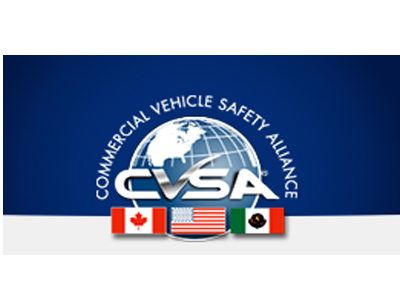The Commercial Vehicle Safety Alliance (CVSA) has petitioned the Federal Motor Carrier Safety Administration (FMCSA) for a second time to more clearly define the term “personal conveyance” in hours of service (HOS) regulations.
Personal conveyance is a “special driving category” allowing the movement of a commercial motor vehicle (CMV) while the driver is off-duty. For a drive to be off-duty, they must be relieved from work and all responsibility for performing work. In 2018, FMCSA updated guidance on when drivers could and could not utilize personal conveyance.
CVSA is a nonprofit association comprised of law enforcement and trucking industry representatives with the goal of creating uniform commercial motor vehicle inspection criteria.
Basically, drivers can only use personal conveyance for personal reasons, such as traveling to lodging, dining, or the nearest, safe rest location. It is not for business purposes, such as repositioning equipment closer to the next shipper or receiver.
Because personal conveyance records the driver as off-duty, there is no impact on the usual HOS limitations. The driver and the motor carrier, however, do remain responsible for the safe operation of the CMV. A driver should annotate the HOS records to show the reason and use of the CMV for personal conveyance. All electronic logging devices must have the capability for a driver to enter the “personal conveyance” mode while off-duty and make those annotations.
Motor carriers may impose distance or time limits on personal conveyance by their drivers and may forbid the movement of laden CMVs.
CVSA does not object to personal conveyance itself. However, it is asking FMCSA to add a maximum distance or time limit on the use of personal conveyance. In a letter to FMCSA, CVSA letter states:
“Under the current guidance, a driver could, in theory, drive hundreds of miles over the course of several hours all under the designation of personal conveyance. This presents the opportunity for increased driver fatigue and risk on our roadways….”
CVSA also cites the difficulty for law enforcement to determine whether a driver is genuinely operating under personal conveyance. According to the group, part of that difficulty began when FMCSA allowed personal conveyance while the CMV was laden.
In that 2018 guidance determination, FMCSA noted that 2.3 million straight trucks operate in interstate commerce where the driver utilizing personal conveyance has little choice but to drive a laden vehicle. The FMCSA guidance also allows the movement of loaded trailers under personal conveyance.
This is the second time CVSA has petitioned FMCSA regarding personal conveyance. The first petition in 2018 referenced Canadian rules on personal conveyance, which set a maximum distance limit and only allowed the movement of unladen CMVs. FMCSA rejected that petition, citing the lack of evidence of “safety-critical events avoided.” This time, CVSA believes it has that evidence.
CVSA points to the increase in “false log” violations. In 2021, false record of duty status rose to the third-most frequent driver violation, compared to sixth-most in 2019. More specifically, in June 2021 the roadside inspection software used by commercial law enforcement added a specific code for false record of duty status violations related to the misuse of personal conveyance. By the end of January 2022, that code had flagged 3,041 personal conveyance violations.
FMCSA may accept the CVSA petition and open up the HOS rules and guidance for public comment on a maximum distance or time limit and possibly on the movement of laden CMVs under personal conveyance.
